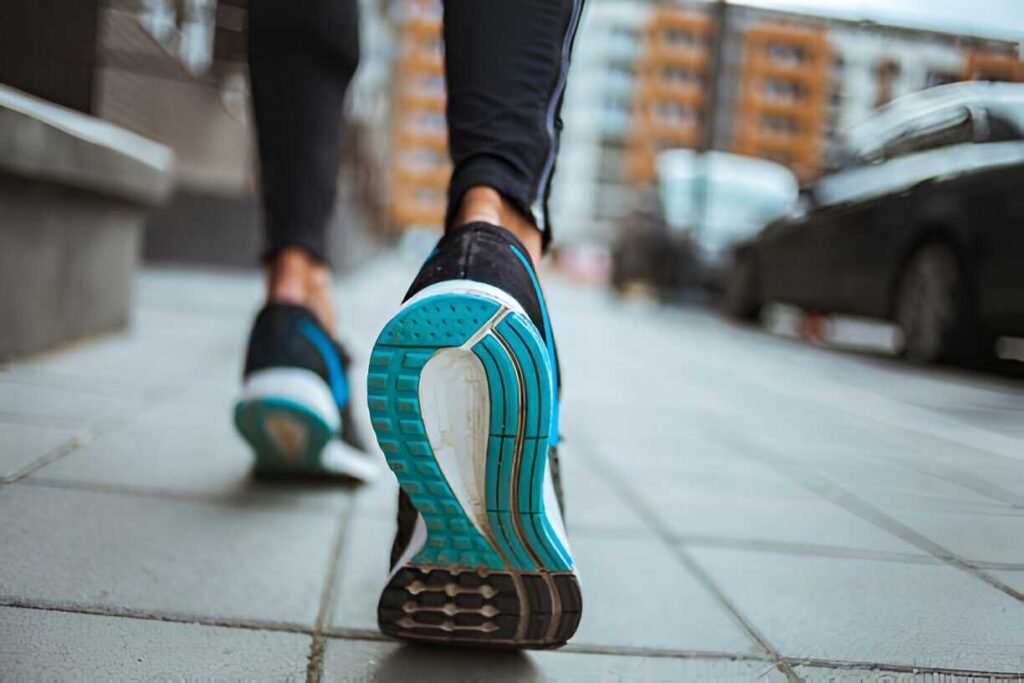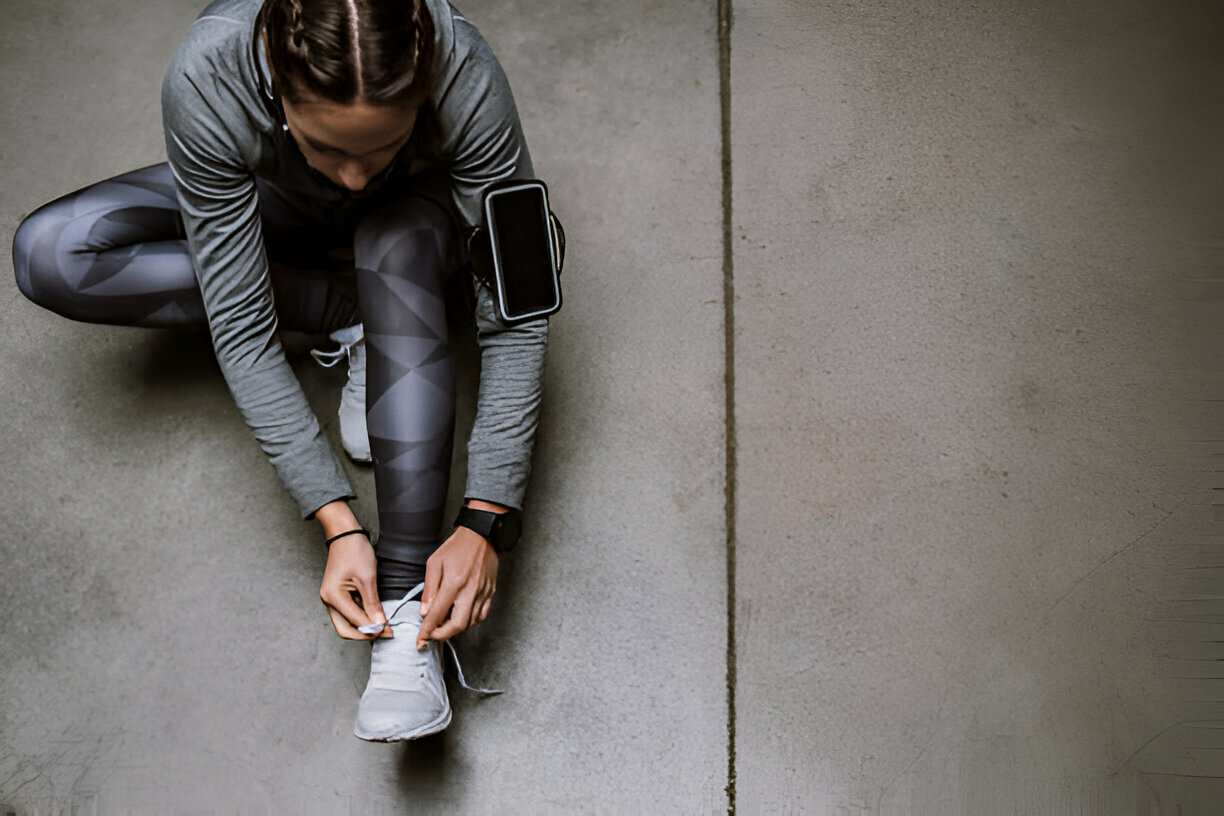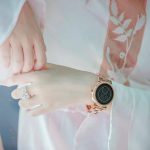Getting the right running shoes can make a huge difference in making one’s running experience satisfactory. You could be a seasoned marathoner or setting up that couch-to-5k program, but with the right shoes, you will do great and be comfortable while avoiding potential injuries. There are so many options open in the market; how do you select the right pair? No need to be afraid. It will be a helpful guide for you in choosing the right running shoe for your needs.
From how to read a running shoe fit guide to how to know what you need from stability features that a shoe may offer, we’ve got guides through the confusing world of sizing and width options. Lace up your shoes—it’s time now to head into the wonderful world of running shoe selection.
Understanding Your Foot Type and Gait
Knowing your foot type and gait is where it’s at when searching for the right running shoe. Everyone has an individual structure and motion of their feet. These features have much to determine about the sort of shoe that will work best on one’s feet. Pronation must be considered first and foremost. It is a natural inward roll that a foot follows from heel strike to toe-off while walking or running. The three main running shoe pronation types are neutral, overpronation, and underpronation. It means you can choose a shoe that suits the type of pronation you have. It’s going to provide support and stability in the right amounts for your foot.
Another important factor when choosing a running shoe is the brand name. Brands of running shoes come with different features and technologies that suit different types of feet and running styles. Some brands may focus on extra cushioning, while others are known for stability or flexibility. You should read reviews and comparisons by different brands that deal in running shoes. This will help you zero in on a brand that best suits your needs and preferences.
One thing looked into detail for the shoes is heel-to-toe drop. It means millimeter discrepancy between the height at the heel and the very forefront or forefoot of the shoe. A higher heel-to-toe drop allows for more cushioning and support; these shoes are for runners whose landing is mostly heavy on the heels. On the other hand, the shoes with a low heel-to-toe drop provide a more natural foot striking feature for midfoot and forefoot strikers. Knowing your gait and foot strike will help in determining the right heel-to-toe drop for your shoe.
Finally, knowing your foot type and gait is very critical. It helps one to get the correct running shoe. You have to determine your pronation type. Afterwards, you can research various brands of running shoes. You will also need to consider the heel-to-toe drop. All these are factors to put into consideration. A good pair of shoes will pay dividends in the long term. It will optimize comfort and minimize possible injury, while optimizing your running. Therefore, after your assessment of the feet and gait is done, invest in a good pair of running shoes that will suit you.
How to Choose Your Running Shoe Size and Fit
A few key elements should be almost compulsorily considered while choosing the right fit and size of the shoe. The most important thing to remember is that no two shoes have the same size; even different brands and at times, even models of shoes of a particular brand vary in terms of their sizing. Hence, measure your feet. Check the brand’s size chart before buying.
Besides size, there are width options one has to consider. Feet come in all shapes and sizes, and an added piece that contributes to comfort and fit dramatically is shoe width. So most brands offer at least three width options: narrow, medium, and wide. It helps to pick a fitting that gives your feet some room for easy movement and would not cause blisters or discomfort.
Another important point to be regarded is the terrain suitability of the running shoe. Yes, producers actually develop shoes according to a running style for roads, trails, or even tracks. All of those things impact performance: tread pattern, outsole material, and stability features. They all matter on different surfaces. You want to choose a shoe that will ensure a great running experience from your surroundings. This will make sure not only top performances while running but also keep you safe.
There comes the difference in the cushioning level of a running shoe. That varies from model to model. You really should find your own right one. Some runners need more cushioning for appropriate shock absorption; others need very minimalistic designs to feel the ground. Trying different models is how you are going to know. This way, you will develop your taste and know exactly which is the perfect running shoe for you—having the right kind of cushioning.
Bringing it all down to a close, one shall consider the correct size and fitting. Size and width in running shoes make a great deal of difference, including the type of terrain and how much cushioning one would want. All these factors affect comfort level, performance, and, therefore, the running experience in general. Measuring and consulting the size charts will consume time. Understanding width is important, too. Consider the kind of running you are going to do on different terrain and the amount of cushioning desired. When you do all this, you shall have found the perfect running shoes.

Considering Your Running Style and Terrain
In running, the right shoes are essential. They are key for comfort and for preventing injury. One important factor to consider is your running style and the terrain you typically run on. Shoes are designed for different needs. They cater to various running styles and terrains.
It’s crucial to determine your running style. Are you an overpronator, underpronator, or do you have a neutral gait? Overpronators have feet that roll inwards. Underpronators have feet that roll outward. Knowing your running style will help you choose shoes. They’ll have the right stability features to support your feet and align your stride.
Next, consider the terrain you usually run on. Do you run on roads, trails, or a combination of both? We’ve got to consider running shoe terrain suitability. It’s key for peak performance and safety. Road running shoes have cushioning for hard, even surfaces. Trail running shoes have more aggressive treads and sturdier construction. They’re for tackling uneven, rugged terrain.
Your selection by evaluating the shock absorption of your shoes. This factor is vital for absorbing shock and providing comfort during your runs. The cushioning level can vary. It depends on your weight, running style, and preference. Some runners prefer plush, well-cushioned shoes. Others may opt for minimal, barefoot-like ones. Experiment with different cushioning levels to find what works best for you.
In conclusion, you need the right pair of running shoes. Consider your running style and the terrain you usually encounter. Understanding your pronation pattern is key. Choosing shoes with the right stability features is important for proper foot alignment. Also, choosing shoes for your preferred terrain will boost your performance. They’ll also cut the risk of injuries. Finally, the right cushioning level is a personal preference. It transforms your running experience. So, before lacing up your shoes, take the time to consider these factors and make an informed decision.
Exploring Different Types of Running Shoes
Choosing the right running shoes is important. You must consider many factors that can affect your performance and comfort.
Running Shoe Cushioning Levels
One of the key aspects to look for is the running shoe cushioning levels. Cushioning absorbs shock and protects against impact. It’s crucial for runners who want to prevent injuries. Running shoes can be categorized into three cushioning levels: minimalist, neutral, and maximalist. Minimalist shoes offer little to no cushioning and are ideal for experienced runners with a natural gait. Neutral shoes provide medium cushioning and are good for most runners. Maximalist shoes offer the most cushioning and are for those who need extra support and protection.
Stability Features
Apart from cushioning, it’s also essential to consider the running shoe’s stability features. Stability is particularly important for runners who overpronate or supinate. Overpronation happens when the foot rolls inward too much, while supination is marked by the foot rolling outward. Stability features include firmer midsoles and supportive structures that help correct these biomechanical issues and promote a more efficient stride. People with overpronation need motion control shoes with strong arch support and sturdy heels. Those with supination should opt for shoes with added cushioning and flexibility.
Heel-to-Toe Drop
Another factor to keep in mind is the running shoe’s heel-to-toe drop. This is the difference in millimeters between the shoe’s heel and forefoot height. Different heel-to-toe drops suit different running styles and preferences. Traditional running shoes feature a higher heel-to-toe offset of 10-12mm, creating a heel-striking platform that many runners like. However, lower drop shoes, with drops of 4-8mm, encourage a more natural midfoot or forefoot strike. These shoes can help runners who prefer a minimal approach or want to strengthen their lower legs and feet.

Testing Out Shoes for Comfort and Support
When choosing shoes, comfort and support are key. These factors cannot be overlooked. You may be a seasoned runner or just want new everyday shoes. It’s important to test them before buying. But how do you find the right running shoe?
Consider your foot type. Knowing your arch type can help choose the right shoe. It will provide the needed support. Flat feet may need shoes with more stability and motion control. High arches may enjoy shoes with extra cushioning. It’s best to consult a specialist or visit a running shoe store. They’ll assess your foot type.
Once you have an idea of what type of shoe you need, it’s time to put them to the test. Take a few laps around the store or, even better, ask if you can take them for a quick jog outside. Pay attention to how the shoes feel on your feet. Are they too tight or too loose? Do they provide enough arch support? Does the cushioning feel adequate? It’s essential to trust your own comfort level and listen to your body’s feedback.
Additionally, don’t overlook the little details. Examine the shoe’s construction and materials, considering factors like breathability, flexibility, and durability. Look for features such as padded collars and tongue. They add comfort. Also, look for a secure lacing system. It allows for a customizable fit.
Remember, finding the right running shoe requires a bit of trial and error. What may work for one person might not work for another. Therefore, take your time and be patient in your search for the perfect fit. Your feet will thank you in the long run!
Seeking Advice from Running Shoe Experts
If you’re a keen runner, you know that finding the right running shoe is key. It’s key for peak performance and avoiding injury. With so many options on the market, it can be overwhelming to choose the perfect pair. That’s why seeking advice from running shoe experts is a great idea.
Running shoe experts are knowledgeable. They know the details of different shoe types how these types impact runners’ biomechanics and can provide valuable insights. They can help you find the right shoe for your needs and consider factors. These include foot type, running style, and existing injuries or conditions.
So how do you find these experts? Start by visiting specialty running stores. These stores often have trained staff. They’ve undergone extensive training to learn the shoe brands, models, and their technologies. They can analyze your gait, measure your foot, and recommend the best shoe for you.
Another great way to get advice from shoe experts is to attend running clinics or workshops. Running clubs or fitness organizations often organize these events. They involve professionals in the field. You’ll get to talk with experts. You can also learn about proper running form, preventing injuries, and training techniques.
Remember that finding the right running shoe is a personalized process. What works for one person may not work for another. Seek advice from running shoe experts. This can increase your chances of finding the perfect fit. It can also improve your running experience. So don’t be afraid to reach out and tap into their expertise – your feet will thank you!

Factoring in Durability and Longevity
When buying any product, durability and longevity are key. This is especially true when it comes to finding the right running shoe. Are you a seasoned runner or starting out? The right shoe can make all the difference in your performance and comfort. So, how do you find the right running shoe that will last you a long time?
Doing Your Research
First, it’s crucial to do your research. Look for reviews and recommendations from other runners with similar styles and needs. This will give you an idea of which brands and models are known for their durability. Also, take the time to learn about the materials and technology used in running shoes. Understanding the construction and design will help you make a more informed decision.
Ensuring the Right Fit and Support
Another important aspect to consider is the fit and support of the shoe. A well-fitting shoe with the right support will prevent injuries and enhance its durability. When trying on running shoes, make sure to walk around and test them out. Pay attention to any potential pressure points, discomfort, or lack of support. A shoe that doesn’t fit can cause intense pain with every step.
Considering Warranty and Return Policy
Consider the warranty and return policy offered by the brand or retailer. A company that stands behind its product’s quality is more likely to make durable shoes. Check if they offer any guarantees or warranties on the shoe’s durability. Also, knowing the return policy can bring you peace of mind if the shoe doesn’t meet your expectations.
Evaluating Cushioning and Stability Features
When finding the right running shoe, you must assess its cushioning and stability. These features are essential for providing comfort and preventing injuries while running. But with so many options available on the market, it can be overwhelming to choose the right one. Fear not. We’ve got a guide to help you find the perfect running shoe. It needs the right cushioning and stability.
Understanding Your Foot Type
It’s important to understand your foot type. The three common types are flat feet, neutral feet, and high arches. Each foot type requires different cushioning and stability levels. If you have flat feet, you’ll need shoes with good arch support. They must also have motion control features to prevent overpronation. For neutral feet, look for shoes with medium cushioning and stability. They will help you keep a natural gait. And if you have high arches, go for shoes with extra cushioning to absorb shock and provide more support.
Examining Foot Strike Pattern and Terrain
Examine your foot strike pattern and the terrain you’ll encounter. If you’re a heel-striker, look for shoes with ample heel cushioning to absorb the impact. Midfoot or forefoot strikers may prefer shoes with less heel cushioning. But, they should have more responsiveness in the forefoot. Also, if you’ll be running on trails or uneven terrains, choose shoes with added stability. They should have features. For example, a supportive upper and thicker outsole for better grip.
Trying On Different Brands and Models
Don’t forget to try on many brands and models before making a decision. Cushioning and stability are important. But, comfort should be your top priority. Walk or run around the store to get a feel for how the shoe supports your foot. Pay attention to any discomfort or pressure points. Remember that everyone’s feet are unique, and what works for others might not work for you.

Customizing Your Running Shoe Selection
Good running requires the right shoes. They are key to your comfort, performance, and injury prevention. With so many options available, finding the perfect running shoe can be overwhelming. But, by following simple rules. You can easily pick running shoes to fit your needs.
First, it’s important to understand your foot type and running style. Are you an overpronator, underpronator, or neutral pronator? Knowing this will help you determine the level of arch support and cushioning you need. You can visit a specialty running store or consult with a podiatrist to have your foot and gait analyzed.
Next, consider the terrain you typically run on. Are you a road runner, or do you prefer hitting the trails? Road shoes are for pavement and have more cushioning. Trail shoes offer better traction and stability on uneven surfaces. Choosing the right shoe type will enhance your running experience. It depends on your running environment.
Don’t forget about the importance of proper sizing. Your feet can change. So, measure both feet and try on shoes in the afternoon. This is when your feet tend to be slightly larger. It’s also a good idea to wear the same type of socks you would typically wear for running to ensure a proper fit.
In conclusion, choosing the right running shoes is crucial. It optimizes your running. Know your foot type. Consider your running environment. Then, you can find the perfect running shoe. You need one that gives you the comfort and support you need. So put on your shoes and hit the road with confidence. You know it’s found the right shoe to improve your running.
Investing in the Perfect Running Shoe for Your Goals
As a runner, one of the most important investments you can make is in a good pair of running shoes. The right running shoe can make all the difference. It enhances performance, comfort, and transforms your entire running experience. But with so many options on the market, how do you find the right running shoe for your specific goals?
Consider your running style and goals. Are you a casual runner, or are you training for a marathon? Do you have a neutral foot strike, or do you overpronate or supinate? Knowing your unique needs will help you narrow down your options. You can then find a shoe that provides the right support and cushioning.
Next, go to a specialty running store. There, staff can assess your stride and help you find the perfect fit. They’ll study your gait and foot type. Then, recommend shoes that fit your biomechanics. Try on several pairs. Jog around the store. This can help you feel out different brands and models.
Don’t forget about comfort. Your running shoe should feel comfortable from the moment you slip them on. Pay attention to the fit. Make sure there is enough room for your toes. Check for any potential discomfort or pressure. Remember: your running shoe is an investment in your health and performance. So, don’t settle for anything less than perfect.
You must invest in the right running shoe for your goals. It’s vital to your running success. Understand your running style. Seek expert advice and rank comfort. Then, you can find the shoe that will support you every step. So, lace up, hit the pavement, and enjoy the journey towards achieving your running goals!
Final Words
Choosing the right running shoe is vital for any runner. This is true whether you’re a beginner or a seasoned athlete. The right shoe can make a big difference. It affects comfort, performance, and injury prevention. With so many options available in the market, finding the perfect fit can be overwhelming.
To find the right running shoe, start by assessing your foot type and running style. Knowing whether you have a high arch, flat feet, or a neutral arch will narrow down your options. Also, consider the type of surface you run on. Different shoes are designed for different terrains.
Next, go to a running store. Trained pros can analyze your foot and give expert advice. They’ll measure your feet. They’ll assess your running gait. Then, they’ll recommend shoes that best suit your needs. Trying on various brands and styles will help you feel what’s comfy and supportive.
Consider the durability and cushioning of the shoe. Replace running shoes every 300-500 miles. So, choose a pair that can handle the miles you plan to run. Remember, buying good shoes is an investment. It’s an investment in your running and foot health. So, take the time to find the right running shoe – it’s your feet will thank you!








